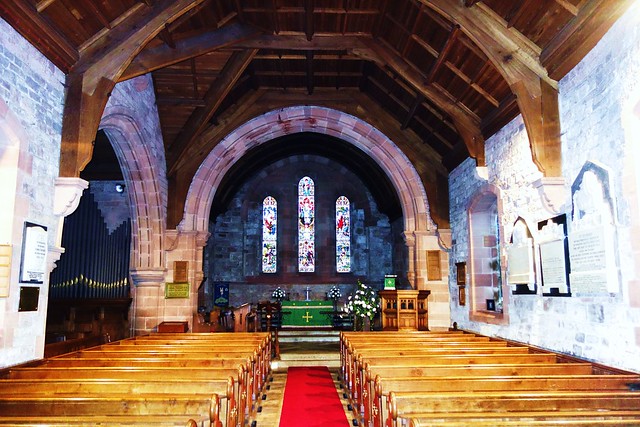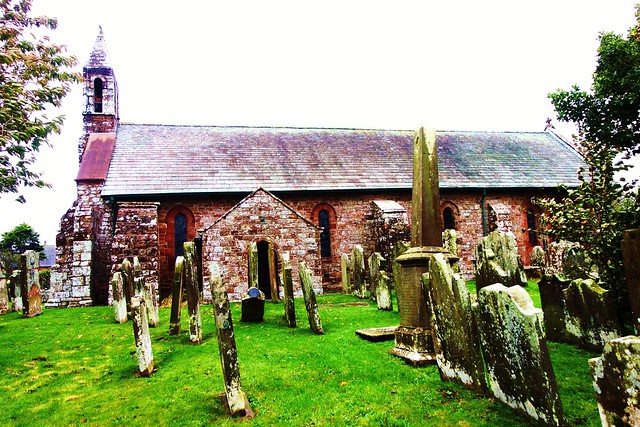St. Michael’s Church, Bowness-on-Solway, England
This evening, I am posting a refreshed version on my original 2022 post.
In Britain (as elsewhere) we have a saying that "all roads lead to Rome". This is particularly pertinent in this relatively remote spot on NW England where locals and others are conscious of their Roman heritage with particular emphasis on the 2nd century AD Hadrian's Wall. Readers may recall my recent post on nearby Drumburgh (4 miles S.E.) where archaeologists have recently discovered the foundations of a section of the famous wall.
Here is a self-explanatory local signpost at Bowness. Not surprisingly, the three local destinations all have Roman era connections.
This local village church at Bowness has extensive Roman connections, viz:
- Built inside the confines of a former Roman fort on the wall.
- Constructed with masonry recycled from the Roman fort.
- Initially used for Roman Catholic worship (until 1540).
South-Western elevation

St. Michael’s Church, Bowness-on-Solway
This evening, I am posting information on St. Michael’s Church, Bowness on-Solway, Cumbria, England.
This church sits within within the confines of a former Roman fort on Hadrian’s Wall which in turn dates back to the 2nd century AD. More information:-
- Bowness-on-Solway is believed to have been the far western terminus of Hadrian’s Wall. Here was the second largest fort on the Wall known as Maia.
- The Solway Firth is a bay or estuary through which runs the boundary between England and Scotland. This area has been designated an Area of Outstanding Natural Beauty and is rich in bird life.
- St. Michael’s dates from the 12th century and was constructed using masonry re-cycled from Hadrian’s Wall and remains of the fort. The church may be sited on the former granary of the fort.
- When constructed, the church would have been used for Roman Catholic worship but since the 16th century has formed part of the Anglican Communion ( Episcopalian).
- The church was subject to a restoration in the 18th century and a north transept added in 1891.
- Main features are now: wide single chamber; nave, north transept; south porch; and double bell tower. The Norman font was found in a local garden in 1848.
- The tower bells are not believed to be original. It is believed the bells were stolen from a church in Dumfries, Scotland in retaliation for theft of originals by the Scots in 1626.
Interior
 f
f



Comments
Post a Comment